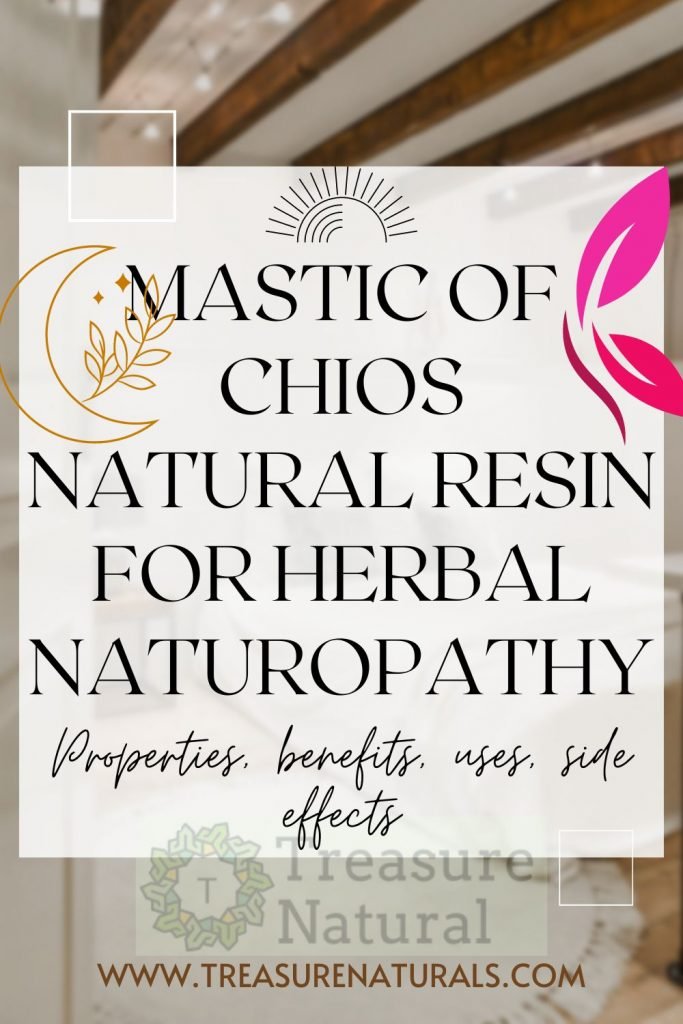
Chios mastic is a natural resin produced and collected from mastic that is used in the food sector and in phytotherapy.
Chios resin or putty has numerous useful properties for the gastrointestinal tract, for mouth hygiene and to calm cough.
Chios mastic is also used to prepare different recipes, especially sweets and in the cosmetic sector.
What is Chios putty
Chios mastic is a resin produced by mastic (Pistacia lentiscus), an evergreen shrub belonging to the Anacardiaceae family.
The mastic is a tree that can reach up to 4 meters in height, characterized by a tortuous trunk, dark and leathery leaves and fragrant flowers arranged in ears.
The drug of mastic is represented by resin, called Chios mastic or Chios tear, collected in the spring thanks to incisions on the bark.
The common name of the resin – Chios mastic – is due to the fact that the mastic is grown mainly on the Greek island of Chios, authorized to collect and export the resin all over the world.
The resin comes out of the incisions after about two weeks and, in contact with the air, it clumps, forming transparent, yellowish and fragrant “tears”.
After harvesting they are washed and cleaned of impurities becoming whitish and, subsequently, they are packaged and marketed for medicinal and food use.
Healing properties and use of Chios putty
The beneficial and healing properties of chios putty have been known since ancient times and are due to several components present in the resin.
The resin that comes out of the trunk of the mastic tree contains an essential oil in addition to tannins, organic acids, triterpene alcohols and a bitter substance called masticina.
Such substances give Chios putty emollient, expectorant, anti-inflammatory, antibacterial, antifungal and healing properties.
Chios mastic, used alone or in combination with mallow and marshmallow, is used to calm cough and especially in the treatment of disorders of the gastrointestinal tract including heartburn, Helicobacter pylori infections, gastroesophageal reflux, gastric ulcer, gastritis and diarrhea.
Thanks to the antiseptic action, mastic resin is also useful in case of inflammation of the oral cavity, to perfume the breath and to prevent the formation of dental plaque. Not surprisingly, Chios putty is used to produce chewing gum and pastes for tooth fillings as well as toothpastes and mouthwashes.
Chios mastic is also used in perfumery and cosmetics to whiten teeth and for the treatment of impure and acne-prone skin.
The resin of the mastic can finally be burned as it happens for incense to purify and perfume closed environments.
Food use of Chios putty
Chios mastic crystals have an initially bitter taste, but during chewing they give off a more acrid and balsamic aroma similar to that of cedar or pine.
Chios mastic is widely used in food production and can be added to both sweet and savory recipes.
In addition to chewing gum, Chios mastic is for example used to prepare an aromatic liqueur called Masticha or Mastika, which is consumed as a digestive or used for cocktails, poured on fruit salad and ice cream or used in pastry to make desserts, including the chew dessert, much appreciated in Greece.
Also in Greece, Chios mastic is added to lollipops, puddings, milk, spoon desserts and baked goods, including Tsoureki, a braid of bread traditionally consumed during Easter
In Arab countries mastic resin is also used to prepare savory dishes based on rice or meat and is an ingredient of chewed cheese.
Finally, Chios resin is also used for the production of a particularly refreshing and thirst-quenching flavored water.






